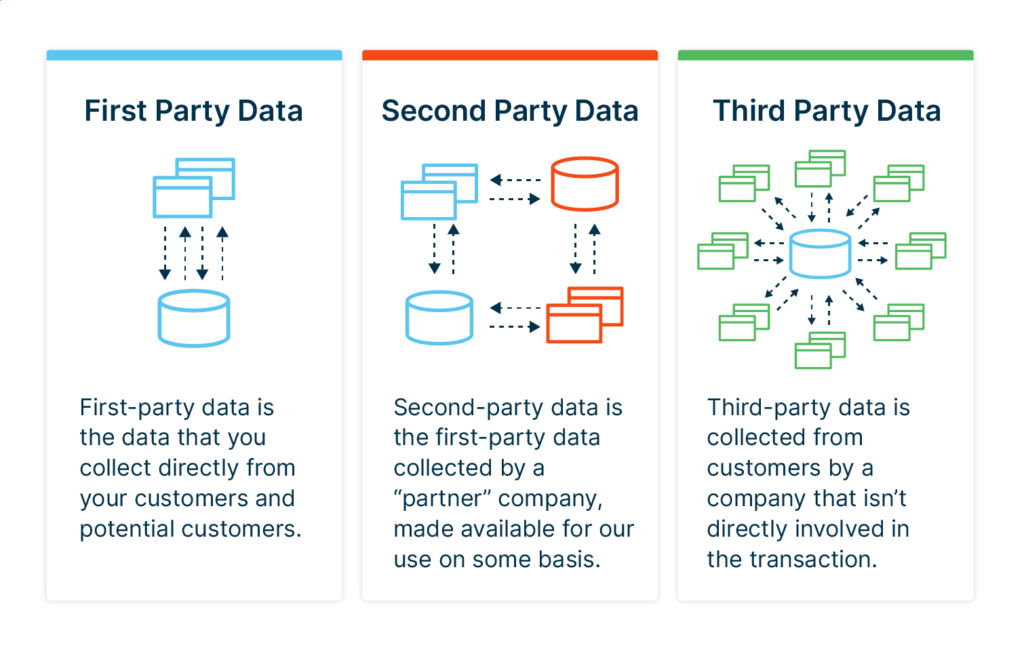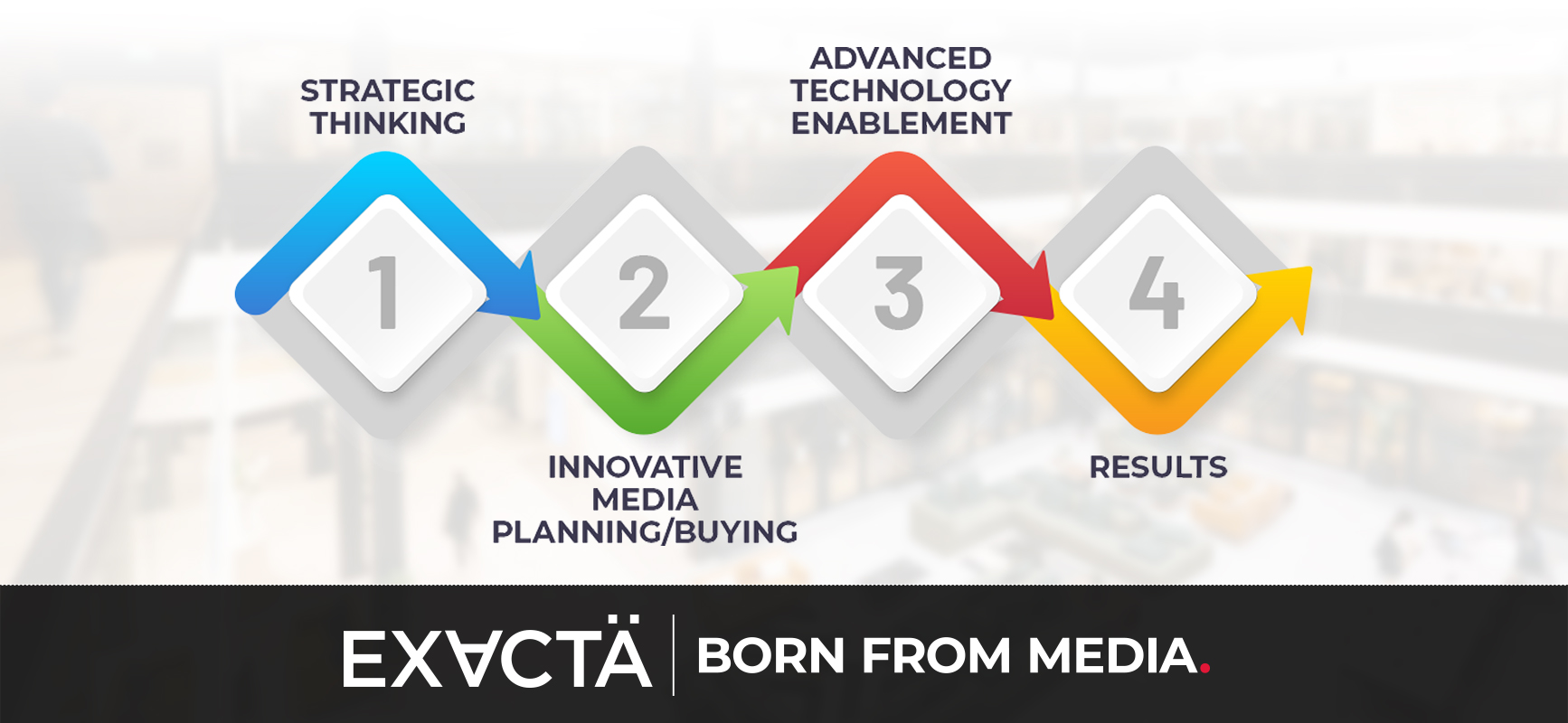

Insights from the EXACTA Media team
The third-party cookie is crumbling faster than a bag of Famous Amos. What is your brand’s plan for collecting and leveraging customer data? Third-party cookies, a small bit of code used to track online activity for advertising and other purposes, are getting deprecated. Most browsers, along with Meta and Google are in the process of phasing them out.
Deprecation of third-party cookies stems from privacy concerns. With all the increased restrictions on targeting within Meta, Google and other platforms due to privacy issues, gathering and collecting first-party data is more critical than ever.
If your brand hasn’t considered the value of first-party data collection and use, it’s time to get started.
What is first-party data?
First-party data is information provided to your company directly from your customers. This often includes name, email address, phone, physical address, browsing/cart and purchase history, and other information that your target audience has supplied to your business. Your brand can get first-party data from your website, mobile website or apps, call centers and customer service points, and other places where your customer interacts with your brand.
 Image credit: ActualTech
Image credit: ActualTech
How can my brand collect first-party data?
The first step in getting value from the data you get from customers is developing a plan for the collection and storage of this beneficial information. Many companies start by using a customer relationship management (CRM) tool. This is a database that offers the ability to store, search and segment your target audience. Many CRMs offer other capabilities as well. It’s best to determine what your brand’s marketing and business goals are before settling on a CRM. You might find that you need a robust tool to meet your KPIs.
 Image credit: SelectSoftware Reviews
Image credit: SelectSoftware Reviews
How can my brand best be prepared for first-party data usage?
When it comes to making the most of the first-party data you’ve collected, it’s important to consider a few things. AdRoll suggests some areas to think about before moving forward:
Determine what you’ll use your first-party data for – Do you want to use it to target specific situations such as cart abandonment and to re-target website browsers? Perhaps your goal is to create an omni-channel marketing strategy or a loyalty program. Decide how you’re going to use your data before making any other plans.
Identify sources and gaps – Figure out where you currently get customer data. Do you already have a strong network of sources, or are there big gaps that need to be filled in data collection?
Decide how you will apply your data – Determine how you want to utilize the information you glean from your first-party insights. This can help you segment your audience, develop personalized marketing messages and more.
Make a measurement and analytics plan – Once you invest in creating the structure of your first-party data collection strategy, it’s imperative to track and review results. Continue to optimize your messaging and strategy to get the best return on investment (ROI).
Invest in the right tools – We touched on this a bit above, but collecting and managing your first-party data can be a big undertaking. Make sure you invest in the right tools (like a CRM) to make the most of your target information and create the best experience for your customer.
How is first-party data valuable?
Particularly as third-party cookies are going away, first-party data will be the only way that brands can get insights from customers. Signal shares a few points of first-party data value:
Improve targeting – Identify and segment your customers to provide a more personalized experience and deliver accurate and timely messages.
Advance omni-channel measurement – By connecting all your customer touchpoints you’ll be able to see a complete view of customer actions and decisions.
Track the customer journey – Map the buyer’s journey and discover how your target audience arrives at the purchase decision or see what leads to cart abandonment/purchase with a competitor.
Close the loop on attribution – See how conversion is affected by budget shifts and accurately analyze engagement and online/in-store sales.
Create a single view of the customer – Each customer is a unique person that engages with the brand both online and offline. Get insights into what inspires purchase and help personalization efforts.
Increase relevancy – First-party data will supply the most accurate understanding of the customer because it comes directly from the source. This will allow brands to track target audience behaviors and develop more engaging and customized marketing messages to facilitate a deeper connection with the customer.
How can I entice my target audience to share their data with my brand?
You might wonder how to get your customers to share essential pieces of information for marketing purposes such as email address or phone number. The key is to always put the customer first. Think about what your customer wants, and then provide that value to them.
- Perhaps they want to be the first to know when items go on sale.
- They might want blogs and videos that explain how to solve common problems and resolve pain points.
- A loyalty program might fit the ticket, with discounts, free items or other rewards.
The bottom line is that customers will be willing to share their valuable information with you if they can see a benefit to the exchange.
First-party value
As third-party cookies are disappearing brands need to be pro-active about collecting and utilizing first-party data. Without a plan, there is a risk of having a sudden and enormous gap in the ability to target and connect with audiences. Be sure to figure out your brand’s long-term marketing goals, and then select a tool that will help manage the collected first-party data to meet those benchmarks. To capture the attention of your customers and entice them to share their data by developing a marketing strategy that provides a clear benefit for the exchange. Once you have a strong base for collection and usage, your brand will be able to tap the incredible value in your first-party data.
Does your business need an agency partner? Learn how EXACTA MEDIA can help. We specialize in end-to-end media management from strategy through buy and optimization. Connect with our team of experts to learn more.


